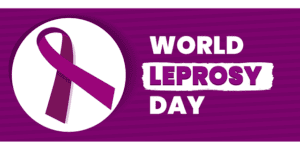Hansen’s Disease
What is Hansen’s disease?
Hansen’s disease, commonly known as leprosy, is a bacterial infection caused by Mycobacterium leprae. It has the potential to affect the skin, nerves, eyes, and lining of the nose. While this disease is slow-growing, it is important to seek treatment as it can lead to severe complications.
Annually, 150 people in the United States are diagnosed with this condition. Around the world, 250,000 people are affected each year.
What are the symptoms of Hansen’s disease?
This disease is slow-growing, meaning that people may be infected for a long time without symptoms appearing. When they do begin, affected individuals may experience growths on the skin, thick and stiff skin, patches of discolored skin, ulcers on the soles of the feet, hair loss in the eyebrows and eyelashes, swelling or lumps on the face and earlobes, numbness of certain areas, weakness and paralysis in the muscles, enlarged nerves, eye issues, nosebleeds, and stuffy noses.
There are also long-term complications of Hansen’s disease if it is left untreated. This includes paralysis in the hands and feet, ulcers on the bottom of the feet that do not heal, blindness, shorter fingers and toes, painful nerves, nose disfigurement, burning sensations in the skin, and redness and pain in affected areas.
What causes Hansen’s disease?
The bacteria Mycobacterium leprae is responsible for Hansen’s disease. While medical professionals are unsure of the exact method of transmission, they believe that it occurs when a healthy person comes into contact with the droplets of an infected person, whether that is through a sneeze or cough. They do know that it is difficult to contract, and that close contact over many months is necessary to spread this illness.
How is Hansen’s disease diagnosed?
The appearance of the skin usually leads doctors to a diagnosis. In order to confirm this, doctors will conduct either a nerve or skin biopsy. It may be necessary to conduct other tests in order to rule out other conditions.
What are the treatments for Hansen’s disease?
A combination of antibiotics are required to treat this condition. A mix of dapsone, rifampicin, and clofazimine will be administered over the course of one to two years. At the end of treatment, Hansen’s disease will typically be cured.
An early diagnosis is necessary, as it can stop complications and prevent any further damage. Once nerve or skin damage has occurred, it cannot be reversed.
Where can I find out more about Hansen’s disease?
Hansen's Disease Articles



January 30th is World Leprosy Day: Let Us Be United for Dignity

January 31st, 2021 is World Leprosy Day: Spreading Leprosy Awareness

Demystifying the Mysterious: Celebrating Awareness on World Leprosy Day
-300x300.jpg)

Families of Japanese Hansen’s Disease Patient to Receive Compensation, Court Orders





